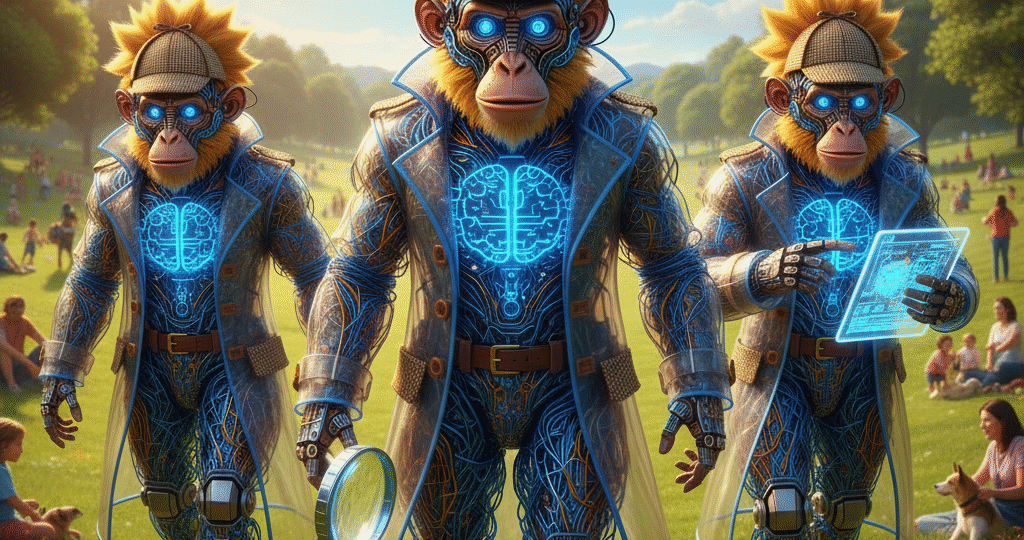Societal Impacts of AI: Identify the Benefits and Risks of Facial Recognition
October 15, 2025 | by Floyd A. Brown

Artificial Intelligence can do analysis, categorizations and make decisions like humans. However, it does not have conscious motivation like people to have ulterior motives to perpetuate bias and power by subjugating human rights and maintaining the marginalization of ethnic groups. The advantage of using artificial intelligence to create facial fingerprints is convenient and exciting for the seamless way in which we can quickly identify a person to verify their identify for granting access to a secured door, unlock a smartphone, identify a missing child or a suspected criminal. However, biased training data can lead to misidentification and entrenchment of past racial bias in modern high-tech societies. Facial recognition can cramp civil liberties in peaceful protest if the public feels that there is no anonymity in large crowds that are making their voices heard for positive change.
Perhaps our initial fear that facial recognition will promote bias and take away civil liberties is premature in its judgement. After the French Revolution in 1789, the technology of the printing press was credited with the spreading the ideas of human rights, government for the people. However, like early Facial Recognition, the printing press “reinforced the monopolies of knowledge” but overtime the expression and ideas of the wider public emerged (Cameron, 2013). Perhaps, the application of AI to enable accurate, scalable, dexterous facial recognition capabilities will go through similar cycles of development with the help of regulations to ensure it protects human rights than ensnares and guillotining individual rights in modern societies.
The public finds it difficult to trust AI systems that scans crowds and capture images and store them without a person’s knowledge or recourse to be removed from such an infringement on their identity. On the other hand, the stealth operation of Facial Recognition Technology is attractive to companies and governments because this application allows them to find, match and identify images of any object or person on the internet by using tools such as Google Image, Facebook photo tag and other image recognition platforms. Trust can be achieved in image recognition with honesty and compliance to people’s expectations that AI will keep humans in the loop with information such as identifying AI generative images for transparency (Dunton, 2023). The implementation of facial recognition systems needs to consider the quality of the data used in building the solution set that it is representative of the wide array of people and facial features it will match to foster trust and minimize occurrence of patterns of bias, privacy violations and ethical questions.
Facial recognition technology is a threat to individual rights to privacy due to its extended use. Our faces are willfully and involuntarily stomped when we set up our phones for biometric security using facial scans and unknown actors whether government, organizations or others grab our image as we walk down the street, go to the movie theatre or hop on a flight to another region. The excess filming, cataloging and judgement of our faces is a threat to liberty because it is driving a behavior change, one inspired by fear of being penalized by a mysterious AI system for which there is not much transparency or recourse when it incorrectly classifies an innocent person as a potential criminal. The best remedy are laws that level the application field of AI to ensure organizations, governments and individuals implement the technology with safe, moral, ethical people centric considerations.
The most critical issue that organizations must address when implementing facial recognition AI systems is that it does not take away societal rights for individual liberty as currently established under the law in local areas. It is also a positive step that companies like IBM and Microsoft are aligned with the European Union lawmakers in refraining from using AI to address potential violations of human rights in the use of facial recognition technology that is inaccurate when applied to dark skinned people. As the module showed, the results of applying artificial intelligence and face recognition for dark skin minorities may create labeling that leads to arrests and other threats to the civil liberties of these populations. (Gargaro, 2024). It is advantageous to use predictive facial recognition to analyze if the behavior profile of a person is indicative of a criminal act. However, AI driven facial recognition tools that continues to send authorities back to already marginalized communities with excess policing is not biased and ineffective because it is not sending solutions to areas that need help but is instead entrancing biased law enforcement in areas that are traditionally unfairly treated.
Facial recognition uses features of the face for identity. Businesses may decide to use it to access secured areas of the company, lock and unlock computer systems, or recognize attendees on confidential Zoom calls. Facial recognition raises ethical, security and privacy cause for concern. It can lead to shorter waits in security queues such as airport lines. However, its inaccuracies threaten civil liberties of some minority populations. The development of AI is improving with reliable data sets to train facial recognition models. However, private companies are not fully incentivizing to do the right thing as they are to make a profit. It is the responsibility of government to output laws at the rate of development of new machine learning algorithms to ensure the protection of individual liberty with the growing application of facial recognition technology.
References
Cameron, M. (2013, June). The printing press and constitutional revolutions | strong constitutions: Social-cognitive origins of the separation of Powers | Oxford academic. https://academic.oup.com/book/7471/chapter-abstract/152388795?redirectedFrom=fulltext
Dunton, C. (2023, May 10). Get helpful context with about this image. Google. https://blog.google/products/search/about-this-image-google-search/Links to an external site.
Gargaro, D., & Millman, R. (2024, July 23). The Pros and cons of Facial Recognition Technology. IT Pro. https://www.itpro.com/security/privacy/356882/the-pros-and-cons-of-facial-recognition-technology
RELATED POSTS
View all



